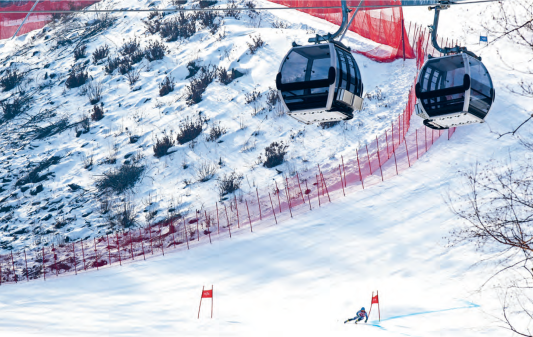
The Olympics have become a boon for ski lift companies, which often supply tens or even hundreds of millions of dollars in new lifts in the run up to each Games. Most recently for Sochi’s 2014 venues, Doppelmayr built a staggering 40 ropeways including multiple tricable gondolas that could even carry cars in the event of road closures. Poma built another $137 million worth – 16 lifts – the most concurrently at a single area in company history. Even summer host cities often feature ropeways that I’d like to think contributed to them being chosen as hosts in the first place. Transport for London and Doppelmayr launched the Emirates Air Line just in time for the 2012 games and Rio de Janeiro debuted multiple urban gondolas in the run up to 2016.
Jeongseon
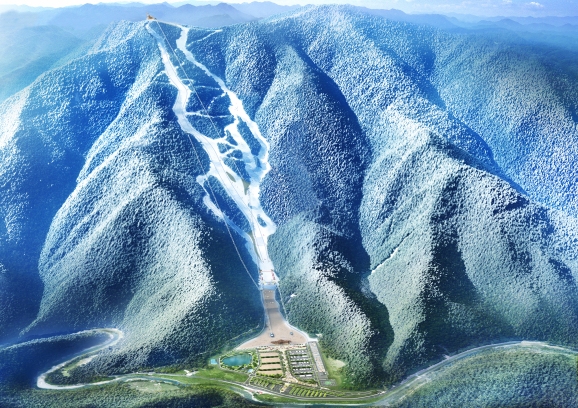
The 2018 games kick off February 9th in and around PyeongChang, South Korea. Three ski resorts will host alpine events just 125 miles from where North Korean dictator Kim Jong-Un opened his own new ski resort with a gondola and four chairlifts in 2013. The South’s democratic government has constructed a similar facility from scratch to host the downhill and super-G events, called Jeongseon Alpine Centre. Doppelmayr supplied a unique two-section gondola in 2015 and added additional two high-speed quad lifts in 2016. This is notable because there are really only two runs! One of the chairlifts is very similar to the temporary Timing Flats high-speed quad at Whistler, which simply ferried foot passengers from the base area to finish plaza during the 2010 Games and was moved to Sunshine Village after just two weeks of public use.
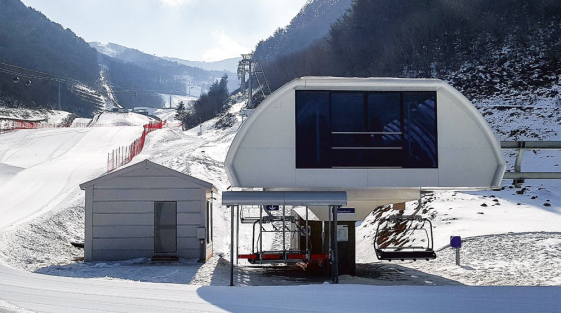
The two-section Jeongseon Downhill Gondola is powered by a single 857 horsepower motor and services the entire 2,707 vertical-foot men’s downhill course. A stacked bullwheel at the lift’s angle station has two grooves for the two different haul ropes. After some delays with site prep, the gondola was built by multiple crews in just three months from November 2015 to February 2016, just before an IOC deadline. The finish line at Jeongseon sits at only 1,788 feet above sea level and a 4,500 gallon-per-minute snowmaking system was also built here. The venue receives little natural snowfall and has been criticized for its ecological impact and questionable future as a public facility.
Phoenix Park
Other ski venues are established public ski resorts with recent upgrades. Phoenix Park will host the parallel GS, slope style, mogul, aerial, half pipe and snow cross events. Opened in 1995, this ski area operates a fleet of eight detachable and two fixed-grip Doppelmayr lifts, including a 1995 vintage gondola and a chondola built in 2005. Doppelmayr just completed a short, two-minute high-speed quad to service the snow cross venue.
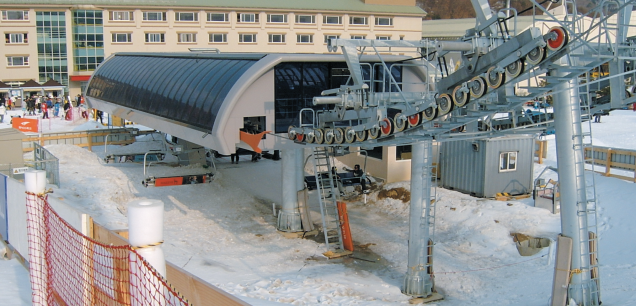
Yongpyong
The slalom and giant slalom events were awarded to Yongpyong Resort, one of the largest ski resorts in Korea. A 12,000-foot long gondola anchors Dragon Peak and there are 13 chairlifts that mostly date back to the 1980s and ’90s. Here you will find the only Poma lifts at these Olympics – two six-packs built in 2004.
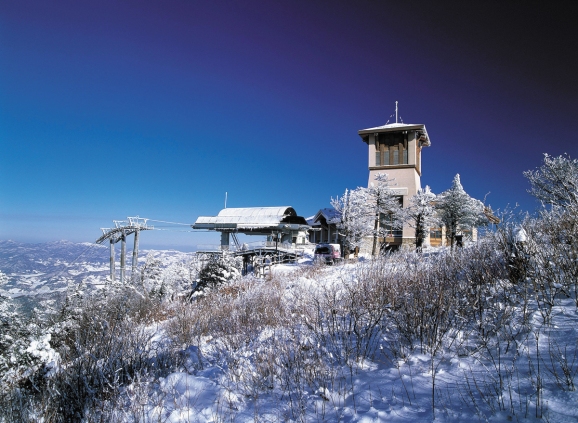
Alpensia Resort
While no alpine events will take place at Alpensia, this potato field-turned-ski-resort will host the ski jumping and sliding events. Three Doppelmayr detachables debuted at Alpensia in 2009, rising only between 250 and 630 feet each. The ski jumps appear to be serviced by some sort of funicular railway rather than the chairlifts.
Looking ahead to the next Winter Olympics in 2022, the Beijing downhill venue does not yet exist. Like in PyeongChang, a new ski resort will be built for it in the Xiaohaituo National Park. Last year, Poma signed an exclusive contract with a venue called Thaiwoo to provide up to $250 million in lifts over the next 5-10 years. Poma already has a manufacturing base in Beijing and will open a spare parts facility in the mountain region to support the growing ski industry there. Other events will be held at the Genting Secret Garden and Wanlong ski resorts, which are adjacent to each other and also likely to see many new lifts before 2022.

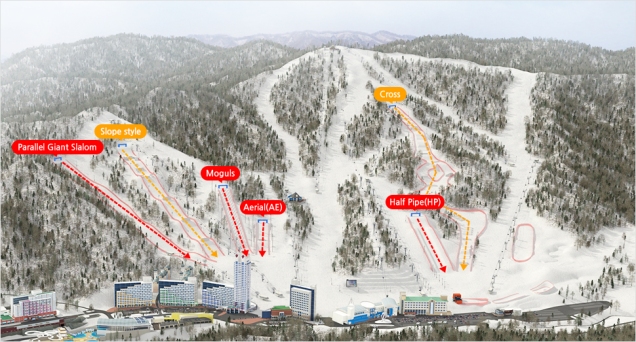
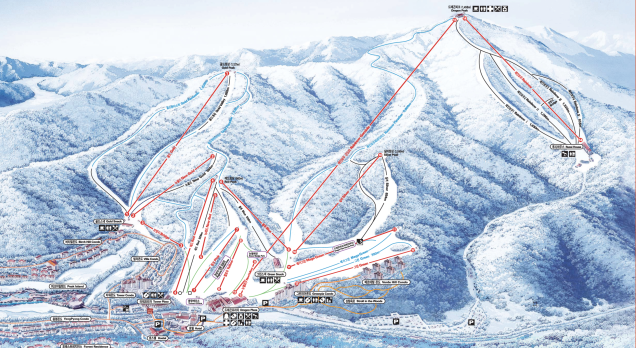
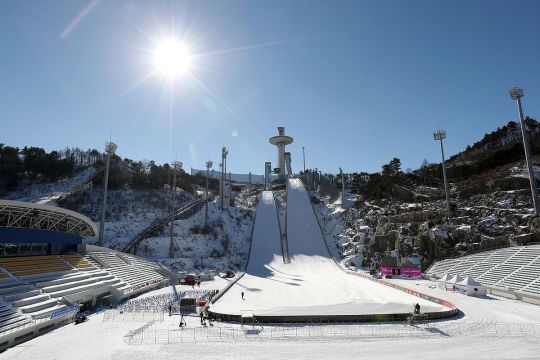
The “Beijing” olympic skiing events will be held 160 miles away from Beijing itself in an area that does not get enough snowfall to support a skiing industry without heavy investment in snow making. This will be the second olympics in a row awarded to a snowless locale which really calls into question the IOC decision making. Evidently the cost of staging a Winter Olympics has gotten so high that traditional ski regions are priced out. By the way, Thaiwoo already exists and operates – thinly covered under tons of manmade snow.
LikeLiked by 2 people
I mean, can you really blame them? The only other candidate for 2022 was in Kazakhstan. Beijing will be the low point of the Olympics, but It looks like Calgary and Sion are confirmed to bid, and Schladming and some American cities are maybes.
LikeLike
At least Kazakstan has real lift-serviced mountains with prodigious dumps of snow. They even have heli skiing in the Tien Shan. The IOC probably picked the venue where the potential for corruption and theft by the local governing elites was the lesser of the two. Tough to pick between China and the Kazahkis on that score.
LikeLike
Sunday’s men’s downhill has been postponed because winds are too strong for the gondola to operate safely.
https://www.aspentimes.com/news/olympic-mens-downhill-ski-race-postponed-amid-strong-wind/
LikeLike
The site below reports the Jeongseon downhill venue will be disassembled and restored to its natural state following the Games. Anyone in need of a very gently used gondola and two high speed quads, take note.
http://www.snowguidekorea.com/ski-resorts/gangwondo/jeongseon-alpine-centre/
LikeLike
That’s kind of a shame, because it means that two of three FIS DH courses in Asia will now be abandoned, with the course in Beijing likely to share the same fate.
LikeLike
That’s ok. Plenty of other downhill courses throughout the world.
LikeLike